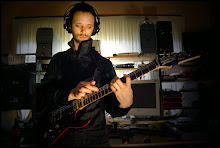Audio Arts – Week 4 – Game Engine Overview:
Audio Arts – Week 4 – Game Engine Overview:

GTA San Andreas was created to run on three different platforms, namely the Playstation-2, the X-box, and PC’s. As this is a post 2004 game released on the same platforms as its franchise predecessors, its development environment changes relating to the hardware involved are minimal. That being said, it is a much bigger game than Vice City or GTAIII, so a lot has been put into creating a larger environment that lacks repetition.
There seems to have been a degree of criticism aimed at Rockstar for sticking with the ‘Renderware’ engine for this instalment of the franchise. Complaints are focused on ‘blocky graphics’ and a poor frame rate when the activity on screen gets too busy. It was perhaps a deliberate move on the part of the company to stick with what they knew, given that this was their most ambitious offering to date at the time of release. Changing to a new engine may have created more problems than it would have solved, and perhaps harmed the continuity of the franchise.
As Rockstar seem to be closely guarding the technical details of their development environment it is worth mentioning some of the real world research that went into making GTA San Andreas. Teams were deployed with professional photographers to map out much of the city and country environments the company whished to emulate in the game. Although it is set in fictitious cities, their real world counterparts (San Francisco, Los Angeles, and Las Vegas) are obvious, and this is in no small part due to accurate portrayal of their respective landscapes thanks to painstaking research.
Music has played an interesting role in the GTA series and San Andreas follows the same format. Set in the early nineties, it specifically uses music from that era, which only plays when the player is operating a vehicle with a radio. There doesn’t appear to be much separating the programming of music and sound across the series, so whether any new approach to accessing audio and playback has been utilised is unlikely. There is certainly a lot more sound in San Andreas compared to the first two offerings though, so if anything was needed it may just have been an upgrade to procedures of asset management.
What must be said for the way this game has developed over time is that it represents a clear case of pushing an old system, and an old GAE, to its limit – at least graphically. Three instalments of this series have been released for the same consoles and computer platforms, so Rockstar have, in my opinion, made the right decision in sticking with the same GAE, even if it was to become redundant soon after the San Andreas release. With the Playstation-3, X-box 360, and PC graphics about to make another quantum leap, why overdevelop for something that’s on its way out?
Reference:
Haines, Christian. “Audio Arts – Week 4 – Game Engine Overview.” Lecture presented at Tutorial Room 408, Level 4, Schultz building, University of Adelaide, 14th of August 2007.


2 Comments:
Ah shit, my game uses Renderware as well. So much for research.
Surprisingly, Burnout Revenge looks quite spectacular, yet GTA:SA looks quite... unspectacular. Plus SA came out after Revenge.
It's not really a fair comparison as "Burnout" is a simplistic game (it only contains car racing) with limited directive, whereas GTA-SA is trying to simulate much more than that.
CJ! UH!
Post a Comment
<< Home